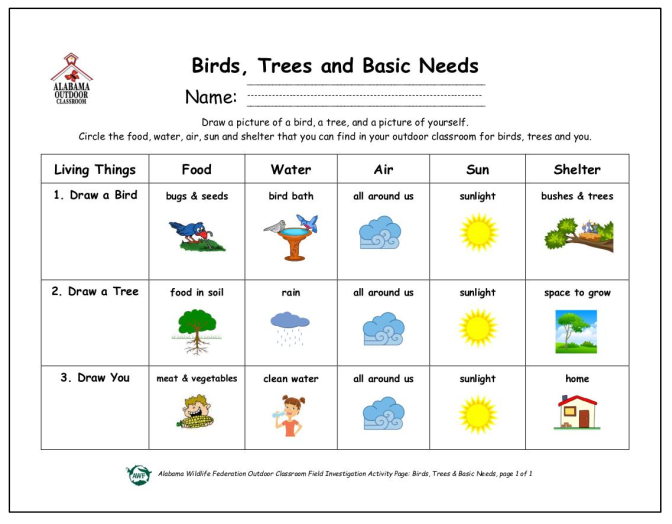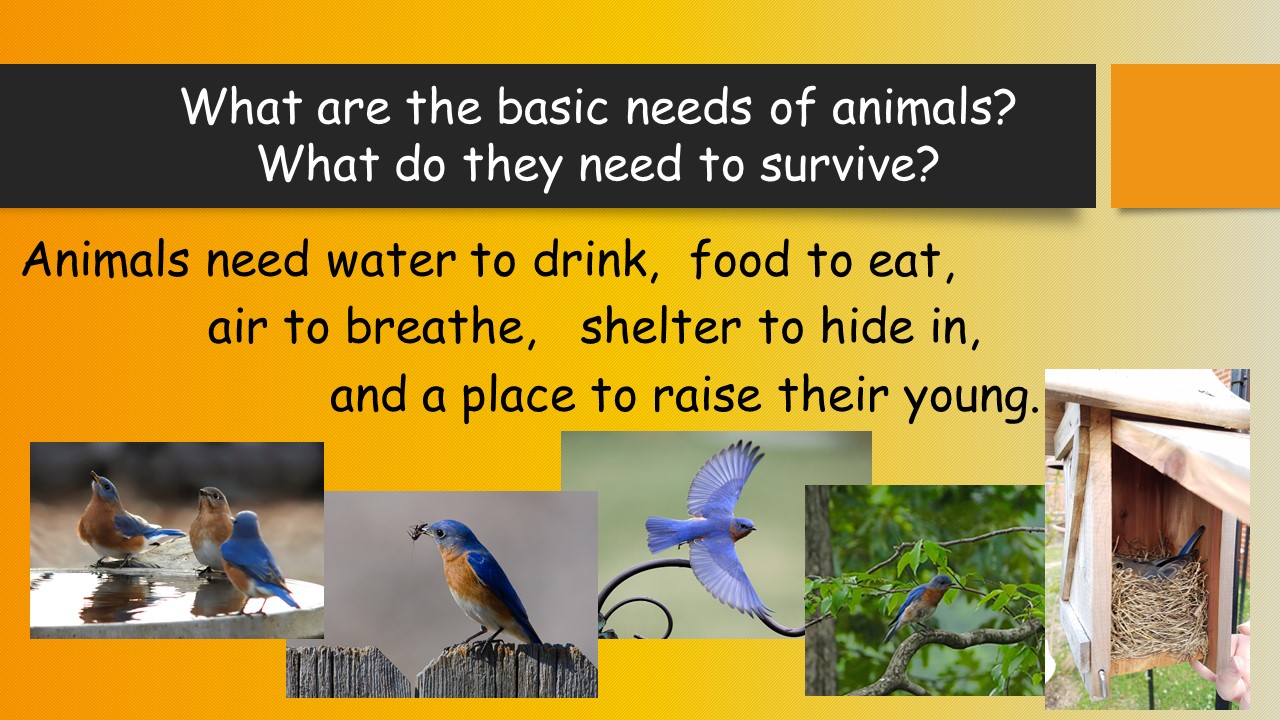Menu







Students discuss the basic needs that plants and animals must have to survive, analyze the patterns of how all living things (plants and animals) have common basic needs, and then determine if a plant and an animal’s basic needs are met in the schoolyard habitat in their outdoor classroom.
Click on the orange links to access free educational materials: Lesson Plans | ALSDE Standards Taught
Activity Page #1: Birds, Trees & Basic Needs (or as Word Doc)Activity Page #2: Ants, Plants & You
(or as Word Doc) with Answer Page #2
Outdoor Activity Materials: activity pages, clipboards, pencils

Engage the students and capture their interests with an Interactive Q&A (or as PDF) that allows you to click through the questions one at a time. You can gauge your students’ understanding of the topic as they answer the questions. Print and use the Q&A Info Sheet (or as Word Doc) to anticipate the next question in the Interactive Q&A and to guide the conversation with the students. (Note: For the PowerPoint (PPT), click “Slide Show” & “From Beginning” to display the questions and answers separately.)
Use these tools to continue the discussion:

As you read these books, you can further explore the topic and discuss your students’ experiences and knowledge around the topic:
What Do Living Things Need? by Elizabeth Austen (ISBN: 978-1480745230)Basic Needs by Jean Feldman (ISBN: 978-1615902132)


Use these educational videos to help explain the topic in more detail:
Students apply what they have learned as they investigate the topic in your outdoor classroom and record their real-world observations on their activity page:
Activity Tip
Version #1 – Basic Needs of Living Things: Birds, Trees & Basic Needs Activity Page: PDF (as is) / Word Doc (editable)Procedure Indoor Discussion:
Outdoor Discovery:
Indoor Discussion:
Optional Extension:
| ||
| Version #2 – Basic Needs of Living Things: Ants, Plants & You Activity Page: PDF (as is) / Word Doc (editable)Procedure Indoor Discussion:
| ||
Outdoor Discovery:
Indoor Discussion:
Optional Extension:
|
Review and assess the students’ observations and answers on their observation pages:
Evaluate the students’ understanding of the topic with the following assessment tool:

Questions? Contact us at oc@alabamawildlife.org.
Website Design and Digital Marketing by